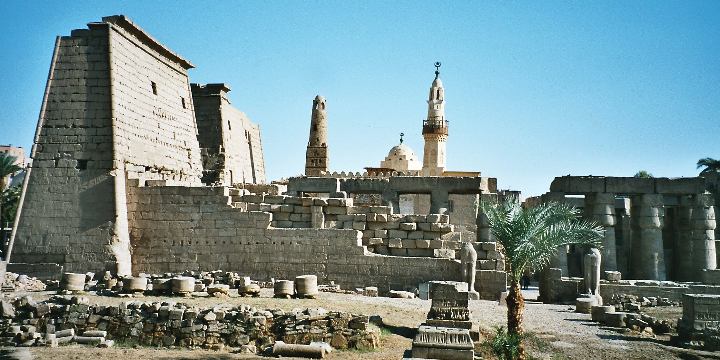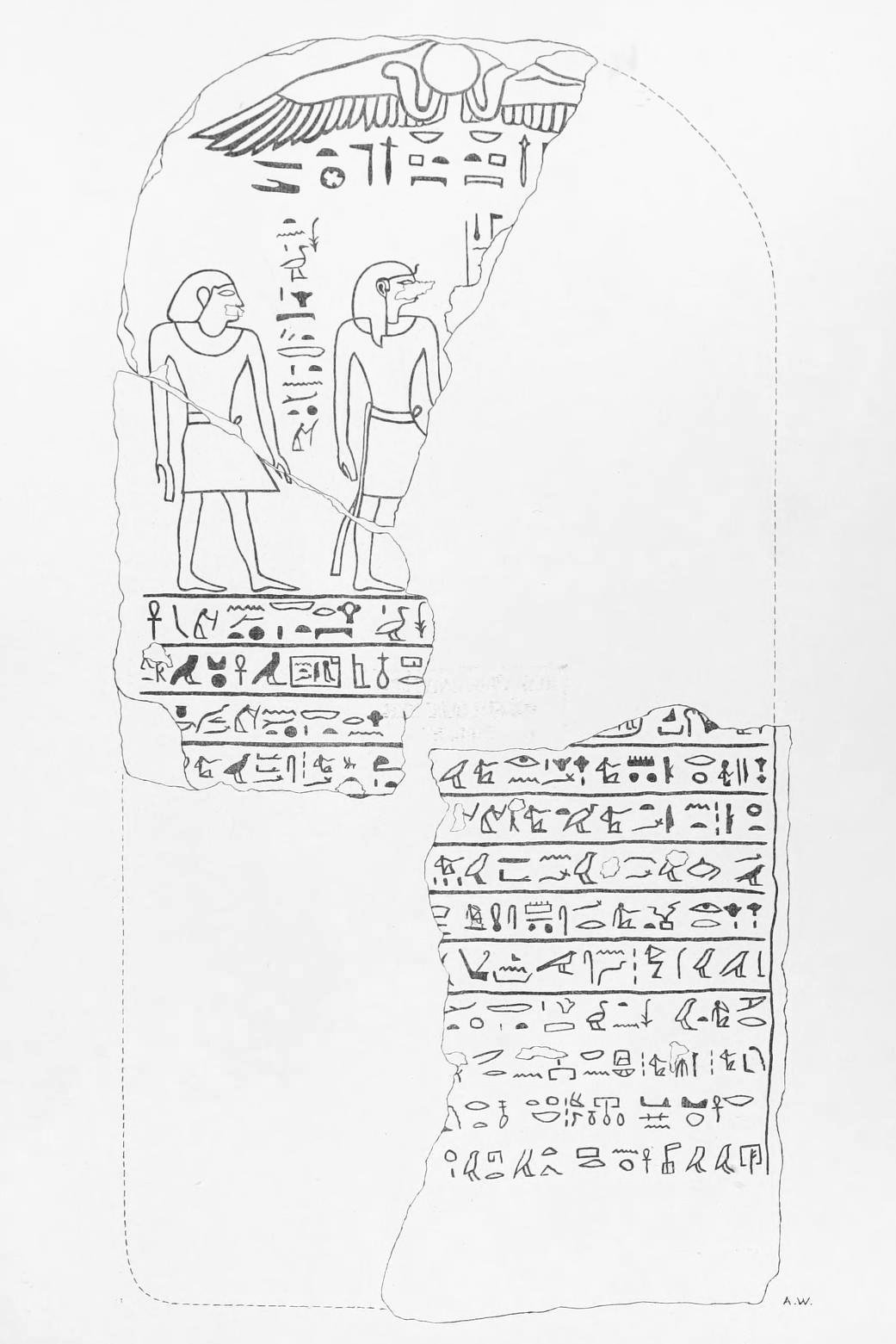|
Sobekemsaf II
Sobekemsaf ''(sbk-m-z3=f;'' “Sobek is his protection”) is an ancient Egyptian theophoric name, popular during the Second Intermediate Period (mainly in the 17th Dynasty). Although it is grammatically masculine, it was also used for women; it was common during this era that the gender of a name did not correspond to that of its bearer.Ranke: ''Persönennamen,'' Band II, p.4 Notable bearers * Pharaoh Sobekemsaf I Sobekemsaf ''(sbk-m-z3=f;'' “Sobek is his protection”) is an ancient Egyptian theophoric name, popular during the Second Intermediate Period (mainly in the 17th Dynasty The Seventeenth Dynasty of Egypt (notated Dynasty XVII, alternatively 17 ... * Pharaoh Sobekemsaf II * official of the 13th Dynasty Sobekemsaf * Queen Sobekemsaf, wife of Nubkheperre Intef * Princess Sobekemsaf C, daughter of Queen Sobekemsaf * obek?msaf A, mother of Pharaoh Rahotep Sources {{reflist Ancient Egyptian given names Theophoric names ... [...More Info...] [...Related Items...] OR: [Wikipedia] [Google] [Baidu] |
Sobek
Sobek (also called Sebek or Sobki, cop, Ⲥⲟⲩⲕ, Souk) was an ancient Egyptian deity with a complex and elastic history and nature. He is associated with the Nile crocodile or the West African crocodile and is represented either in its form or as a human with a crocodile head. Sobek was also associated with pharaonic power, fertility, and military prowess, but served additionally as a protective deity with apotropaic qualities, invoked especially for protection against the dangers presented by the Nile. Sobek has been famed for having been revered by the first female Pharaoh by the Nebty name Sat-Sekhem-Nebet-Tawy Sobekneferu, present both in the female Pharaoh's nomen, Sobek'Neferu (sbk-nfrw - Beauty of Sobek), and her praenomen Ka'Sobek'Re (The Ka of Sobek-Ra). History Sobek enjoyed a longstanding presence in the ancient Egyptian pantheon, from the Old Kingdom of Egypt (c. 2686–2181 BCE) through the Roman period (). He is first known from several different Pyramid ... [...More Info...] [...Related Items...] OR: [Wikipedia] [Google] [Baidu] |
Theophoric Name
A theophoric name (from Greek: , ''theophoros'', literally "bearing or carrying a god") embeds the word equivalent of 'god' or God's name in a person's name, reflecting something about the character of the person so named in relation to that deity. For example, names embedding Apollo, such as ''Apollonios'' or ''Apollodorus'', existed in Greek antiquity. Theophoric personal names, containing the name of a god in whose care the individual is entrusted (or a generic word for ''god''), were also exceedingly common in the ancient Near East and Mesopotamia. Some names of theophoric origin remain common today, such as Theodore (''theo-'', "god"; ''-dore'', origin of word compound in Greek: ''doron'', "gift"; hence "God's gift"; in Greek: ''Theodoros'') or less recognisably as Jonathan (from Hebrew ''Yonatan/Yehonatan'', meaning "Yahweh has given"). Classical Greek and Roman theophoric names * Demetrius and its derivatives mean "follower of Demeter." * Dennis, in Latin ''Dionysius'', ... [...More Info...] [...Related Items...] OR: [Wikipedia] [Google] [Baidu] |
Second Intermediate Period Of Egypt
The Second Intermediate Period marks a period when ancient Egypt fell into disarray for a second time, between the end of the Middle Kingdom and the start of the New Kingdom. The concept of a "Second Intermediate Period" was coined in 1942 by German Egyptologist Hanns Stock. It is best known as the period when the Hyksos people of West Asia made their appearance in Egypt and whose reign comprised the 15th Dynasty, which, according to Manetho's ''Aegyptiaca'', was founded by a king by the name of Salitis. End of the Middle Kingdom The 12th Dynasty of Egypt came to an end at the end of the 19th century BC with the death of Queen Sobekneferu (1806–1802 BC).Kim S. B. Ryholt, ''The Political Situation in Egypt during the Second Intermediate Period, c. 1800–1550 B.C.'', Museum Tusculanum Press, Carsten Niebuhr Institute Publications 20. 1997, p.185 Apparently she had no heirs, causing the 12th Dynasty to come to a sudden end, and, with it, the Golden Age of the Middle Ki ... [...More Info...] [...Related Items...] OR: [Wikipedia] [Google] [Baidu] |
Seventeenth Dynasty Of Egypt
The Seventeenth Dynasty of Egypt (notated Dynasty XVII, alternatively 17th Dynasty or Dynasty 17) was a dynasty of pharaohs that ruled in Upper Egypt during the late Second Intermediate Period, approximately from 1580 to 1550 BC. Its mainly Theban rulers are contemporary with the Hyksos of the Fifteenth Dynasty and succeed the Sixteenth Dynasty, which was also based in Thebes. In March 2012, French archeologists examining a limestone door in the Precinct of Amun-Re at Karnak discovered hieroglyphs with the name Senakhtenre, the first evidence of this king dating to his lifetime. The last two kings of the dynasty opposed the Hyksos rule over Egypt and initiated a war that would rid Egypt of the Hyksos kings and began a period of unified rule, the New Kingdom of Egypt. Kamose, the second son of Seqenenre Tao and last king of the Seventeenth Dynasty, was the brother of Ahmose I, the first king of the Eighteenth Dynasty. Some mainstream scholars have suggested that the Seventee ... [...More Info...] [...Related Items...] OR: [Wikipedia] [Google] [Baidu] |
Sobekemsaf I
Sobekemsaf ''(sbk-m-z3=f;'' “Sobek is his protection”) is an ancient Egyptian theophoric name, popular during the Second Intermediate Period (mainly in the 17th Dynasty). Although it is grammatically masculine, it was also used for women; it was common during this era that the gender of a name did not correspond to that of its bearer.Ranke: ''Persönennamen,'' Band II, p.4 Notable bearers * Pharaoh Sobekemsaf I * Pharaoh Sobekemsaf II * official of the 13th Dynasty Sobekemsaf * Queen Sobekemsaf, wife of Nubkheperre Intef * Princess Sobekemsaf C, daughter of Queen Sobekemsaf * obek?msaf A, mother of Pharaoh Rahotep Sekhemre-Wahkhau Rahotep was an Egyptian pharaoh who reigned during the Second Intermediate Period, when Egypt was ruled by multiple kings. The Egyptologists Kim Ryholt and Darrell Baker believe that Rahotep was the first king of the 17th Dynasty ... Sources {{reflist Ancient Egyptian given names Theophoric names ... [...More Info...] [...Related Items...] OR: [Wikipedia] [Google] [Baidu] |
Sobekemsaf II
Sobekemsaf ''(sbk-m-z3=f;'' “Sobek is his protection”) is an ancient Egyptian theophoric name, popular during the Second Intermediate Period (mainly in the 17th Dynasty). Although it is grammatically masculine, it was also used for women; it was common during this era that the gender of a name did not correspond to that of its bearer.Ranke: ''Persönennamen,'' Band II, p.4 Notable bearers * Pharaoh Sobekemsaf I Sobekemsaf ''(sbk-m-z3=f;'' “Sobek is his protection”) is an ancient Egyptian theophoric name, popular during the Second Intermediate Period (mainly in the 17th Dynasty The Seventeenth Dynasty of Egypt (notated Dynasty XVII, alternatively 17 ... * Pharaoh Sobekemsaf II * official of the 13th Dynasty Sobekemsaf * Queen Sobekemsaf, wife of Nubkheperre Intef * Princess Sobekemsaf C, daughter of Queen Sobekemsaf * obek?msaf A, mother of Pharaoh Rahotep Sources {{reflist Ancient Egyptian given names Theophoric names ... [...More Info...] [...Related Items...] OR: [Wikipedia] [Google] [Baidu] |
Sobekemsaf (13th Dynasty)
Sobekemsaf (sbk-m-z3(w)=f; “Sobek is his protection”) was an ancient Egyptian official of the Thirteenth Dynasty, around 1700 BC. He is especially well known from his statue in Vienna. Family Sobekemsaf came from an influential family. His father was the ''scribe of the vizier'' Dedusobek Bebi. His mother was a certain Duanofert. His uncle Nebankh, the brother of his father was high steward under Sobekhotep IV, and therefore one of the most influential officials at the royal court. The sister of Sobekemsaf was the queen Nubkhaes. She evidently managed to marry into the royal family, or her husband managed to become king. Albeit her royal husband is not yet identified for sure. Attestation Sobekemsaf appears on several monuments. They include a stela now in the Louvre in Paris (C13), a statue in Berlin (Inv. no. 2285), a stela in the Egyptian Museum in Cairo (CG 20763) and the almost lifesize statue today in Vienna, in the Kunsthistorisches Museum (inv. no. 5801). The bas ... [...More Info...] [...Related Items...] OR: [Wikipedia] [Google] [Baidu] |
Sobekemsaf (queen)
Sobekemsaf ''(sbk-m-z3=f)'' Grajetzki, Wolfram. ''Ancient Egyptian Queens: A Hieroglyphic Dictionary.'' London: Golden House Publications. (2005), p. 44 was an ancient Egyptian queen of the 17th Dynasty. She was the wife of pharaoh Nubkheperre Intef and sister of an unidentified pharaoh, probably Sekhemre-Heruhirmaat Intef, Sobekemsaf II or Senakhtenre Ahmose.Dodson & Hilton, p. 118 Her name ("Sobek protects him"Grajetzki, p. 304) is grammatically masculine. Although a female version of the name ''(sbk-m-z3=s)'' did exist, the queen is named Sobekemsaf in all sources, so it was not an error on the scribe's part, but she was probably named for an ancestor. Masculine names for females were not uncommon during the Second Intermediate Period. Attestations She is mentioned on a bracelet and a pendant, now both in the British Museum. In her family's hometown Edfu she is known from stelae. The first is Cairo CG 34009. The stela, belonging to an official called Yuf Yuf was an Anc ... [...More Info...] [...Related Items...] OR: [Wikipedia] [Google] [Baidu] |
Nubkheperre Intef
Nubkheperre Intef (or Antef, Inyotef, sometimes referred to as Intef VI) was an Egyptian king of the Seventeenth Dynasty of Egypt at Thebes during the Second Intermediate Period, when Egypt was divided by rival dynasties including the Hyksos in Lower Egypt. Rise to power He is known to be the brother of Sekhemre-Wepmaat Intef—and this king's immediate successor—since he donated Louvre Coffin E3019 for this king's burial which bears an inscription that it was donated for king Sekhemre Wepmaat Intef "''as that which his brother, king Antef'' (Nubkheperre Intef here) ''gives''", notes Kim Ryholt. As the German scholar Thomas Schneider writes in the 2006 book ''Ancient Egyptian Chronology (Handbook of Oriental Studies)'': :From the legend on the coffin Louvre E 3019 (Sekhemre-Wepmaat's coffin), it follows that Inyotef Nebukheperre'...arranged the burial of his brother Inyotef Sekhemre'-upimaat...and must have therefore have followed him on the throne. In his ''Untersuchungen'', ... [...More Info...] [...Related Items...] OR: [Wikipedia] [Google] [Baidu] |
Rahotep
Sekhemre-Wahkhau Rahotep was an Egyptian pharaoh who reigned during the Second Intermediate Period, when Egypt was ruled by multiple kings. The Egyptologists Kim Ryholt and Darrell Baker believe that Rahotep was the first king of the 17th Dynasty. __FORCETOC__ Attestations Rahotep seem to be attested at Abydos and Coptos. Rahotep is known from a stele found at Coptos reporting the restoration of the temple of Min. The stele, now in the Petrie Museum (UC 14327), reads Rahotep is also attested on a limestone stele, now in the British Museum (BM EA 833), which shows him making an offering to Osiris for two deceased, an officer and a priest. The stela appears to have been made at a workshop at Abydos. Other stelae produced by this workshop belong to king Sekhemrekhutawy Pantjeny and king Wepwawetemsaf. All three kings reigned therefore quite close in time.Marcel Marée: ''A sculpture workshop at Abydos from the late Sixteenth or early Seventeenth Dynasty'', in: Marcel Marée ... [...More Info...] [...Related Items...] OR: [Wikipedia] [Google] [Baidu] |
Ancient Egyptian Given Names
Ancient history is a time period from the beginning of writing and recorded human history to as far as late antiquity. The span of recorded history is roughly 5,000 years, beginning with the Sumerian cuneiform script. Ancient history covers all continents inhabited by humans in the period 3000 BCAD 500. The three-age system periodizes ancient history into the Stone Age, the Bronze Age, and the Iron Age, with recorded history generally considered to begin with the Bronze Age. The start and end of the three ages varies between world regions. In many regions the Bronze Age is generally considered to begin a few centuries prior to 3000 BC, while the end of the Iron Age varies from the early first millennium BC in some regions to the late first millennium AD in others. During the time period of ancient history, the world population was already exponentially increasing due to the Neolithic Revolution, which was in full progress. While in 10,000 BC, the world population stood ... [...More Info...] [...Related Items...] OR: [Wikipedia] [Google] [Baidu] |





